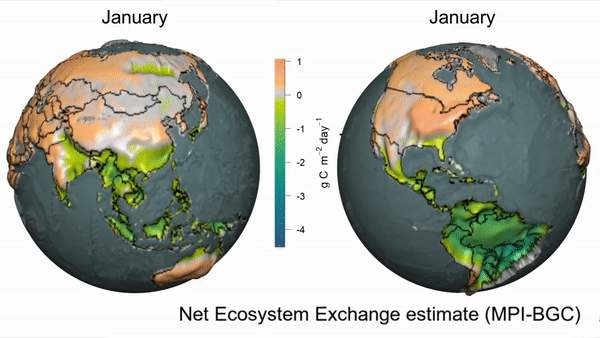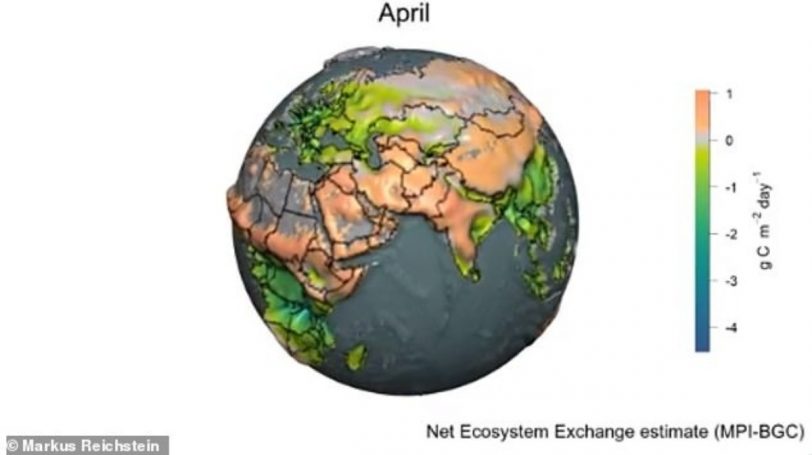The Earth seems to inhale and exhale in a new animation that shows how carbon is taken up and released as the seasons change.
During the summer, the animated continents appear to deflate, indicating times and locations where vegetation is growing and plants are sucking carbon dioxide out of the atmosphere. The continents appear to inflate during the winter, indicating that vegetation is dying and carbon is being released.

The changes are most visible at temperate latitudes, such as continental Europe and North America, where seasonal variations are more pronounced. Equatorial regions don’t change as much throughout the year, while some desert regions, being sparsely vegetated, don’t store or release much carbon at all.
The data for the animation comes from satellite observations and hundreds of carbon-monitoring stations worldwide, said Markus Reichstein, the director of the Biogeochemical Integration Department at the Max-Planck-Institute for Biogeochemistry in Germany, who posted the animation on Twitter on Jan. 6.
The animation ultimately illustrates an important aspect of the carbon cycle, or the movement of carbon throughout the planet’s system. Carbon can be released into the atmosphere by decaying organic matter and the erosion of carbon-containing rocks; on the other hand, it can be taken up by the oceans and plants, which use carbon in the photosynthesis process.
The importance of plants is clear in the animation, which shows places rich in plants, such as the Brazilian Amazon and the forests of Eastern Europe, absorbing massive amounts of carbon in the summers of the southern and northern hemispheres, respectively. The ocean is not included in the animation because, while it does absorb carbon, it does not exhibit strong seasonal patterns, Reichstein said.
Climate change is altering the pattern of vegetation growth around the globe, Reichstein said, so the flow of carbon in and out of the biosphere is also changing. Those changes are too small to show up on a visualization such as this one, he said, but they will have different impacts in different places. For example, warmer, longer summers in the Northern Hemisphere can be good for plant growth, he said. But where warming comes with a lack of precipitation — as in much of the American West — climate change can restrict plant growth.

“This carbon cycle and how it changes from month to month tells us a lot,” Reichstein said. But when it comes to societal impact, he said, the takeaway message is that forests are crucial to the planet’s health. Recent research finds that the Amazon, one of the biggest carbon sinks on the planet, has recently been releasing more carbon each year than it takes in thanks to deforestation and wildfires.
“It basically is showing how important it is to protect the carbon sinks,” he said.
Originally published on Live Science.





